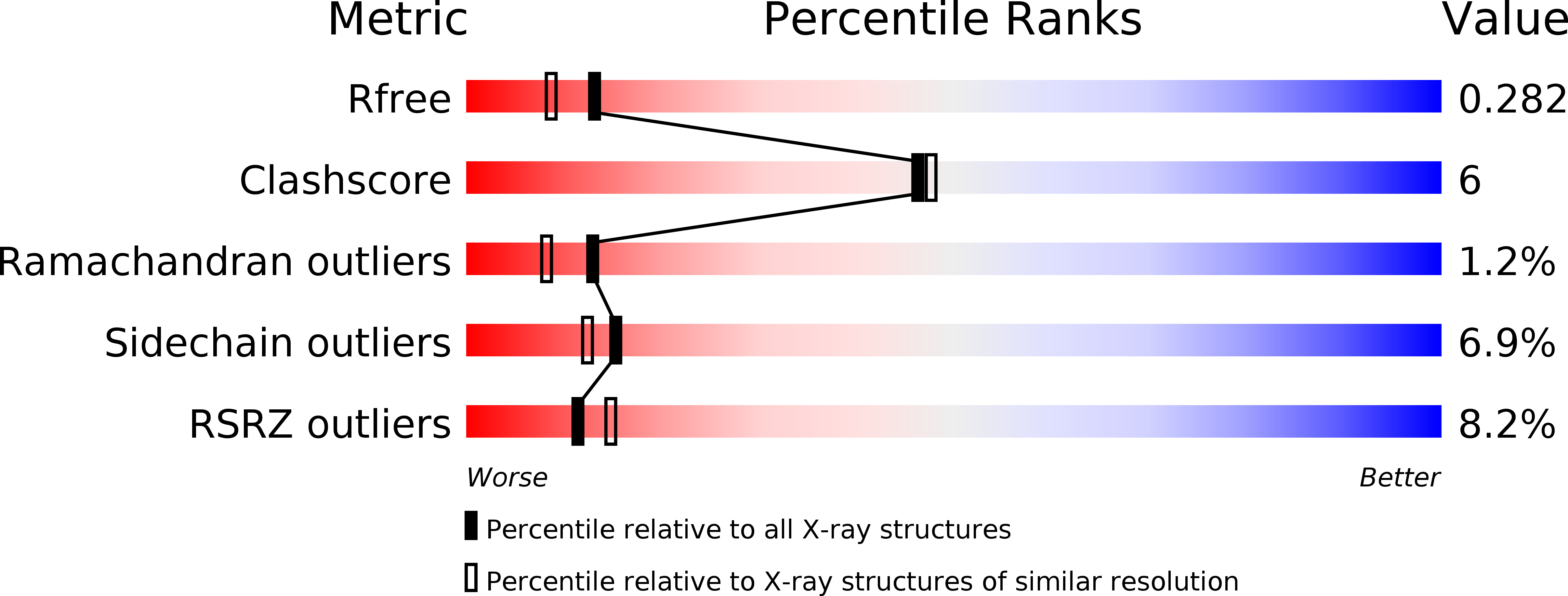
Deposition Date
2007-12-27
Release Date
2008-12-30
Last Version Date
2024-10-30
Entry Detail
PDB ID:
3BT4
Keywords:
Title:
Crystal Structure Analysis of AmFPI-1, fungal protease inhibitor from Antheraea mylitta
Biological Source:
Source Organism:
Antheraea mylitta (Taxon ID: 34739)
Method Details:
Experimental Method:
Resolution:
2.10 Å
R-Value Free:
0.29
R-Value Work:
0.24
R-Value Observed:
0.25
Space Group:
P 63 2 2


